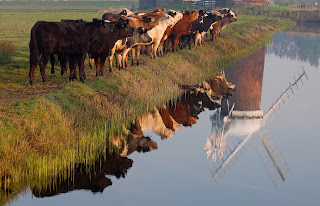The Broads is a member of the international family of National Parks, and unique landscape of shallow lakes and rivers is renowned for wildlife. In fact it is a rich mix of attractions are on offer on land and water all year round and the historic city of Norwich is right on the doorstep. The Broads are a network of mostly navigable lakes and rivers in the UK Counties of Norfolk and Suffolk. The Surrounding land was constituted as a special area with a level of protection similar to a National Park by The Norfolk and Suffolk Broads Act of 1988, and main responsibility is to managing the area by The Broads Authority, a Special Statuory, which started the operation in 1989. It is UK largest protected wetland and a sprawling inland waterway where 6 free-flowing rivers wander 200 KM through a landscape soaked with lakes, fens, and marshes. The fens boggy peat-land rich with reeds and rushes are home to over 250 plant species, including the odd fen orchid. The Broads’ grazing marshes are home to waterfowls and wading birds, while the Breydon Water estuary is a famous stop for important flocks of migratory birds. The total area is 117 sq mi, most of which is in Norfolk, with over 120 mi of navigable waterways, and seven rivers and 63 broads, mostly less than 13 ft deep. Thirteen broads are usually open to navigation, with a further three having navigable channels.
Some broads have navigation restrictions imposed on them in autumn and winter. Moreover; Man-Made The Broads’ landscape is in fact man-made in large part as a byproduct of some two centuries of excavation. In the 12th century, with most of east Norfolk’s woodlands cut, area inhabitants started to dig huge pits and extract peat as a major fuel source. Interestingly the diggings slowly filled with water and eventually became an enormous wetland. The Wide shallow waterways of Broads are best for boating for beginners, boaters from sailors to canoeists. The tour guided are easily available, as park is considered fine place for beginners to learn in a safe scenic environment, and also visitors can sail on one of the legendary Norfolk wherries, which once made commerce move in the region. For nature lovers, Mammals in the Broads include mice and water shrews as well as larger animals such as otters.
Several plants growing like stoneworts are exclusive to the Broads; others are all-encompassing species, like Himalayan balsam, which threaten to tip the local ecosystem off balance. The attractive Broads landscapes include extensive bike trails almost 300 KM of footpaths and villages. It is highly recommended to experience the Broads by boat, because water is the heart of this place. The real essence of Broad is always something happening here, wildlife watchers will find multiple verities and activities in both seasons (spring and summer). Transit time from London is two hours, buses and trains can catch bearby the city of Norwich, as well as smaller stations within the Broads proper. Moreover Norwich also has the international airport facility with global connection via Manchester, Amsterdam, and Paris. Whatever you want to do here, hire a boat for a day, visit a nature reserve, historic buildings, or shopping, birdwatching, walking, cycling, are famous things. To protect this beautiful landscape, everyone has to love the Broads is the visitor offering scheme for the Norfolk and Suffolk Broads. The real purpose behind this scheme is to inspire people to care the environment via small donations by giving money directly. If every visitor to the Broads gave just £1 we could raise £7 million each year for projects to protect the Broads in the future.
























































